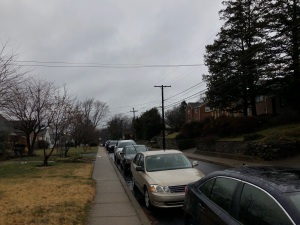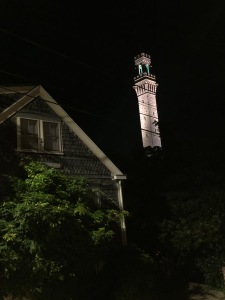The skies were depressingly grey two Saturdays ago, the wind was not gentle, and rain poured down in buckets. In other words, it was real shitty outside. I’m no fan of such conditions — except for ducks, who the f*ck is? — but I was itching to wander the aisles of a local public library, and my aged body was in need of some exercise. So, out the door I went that morning, scrambled to my car and headed off to take care of business.
Success awaited me at destination number one, the library, where I found a book I’ve wanted to read for a long time (A Year In Provence, by Peter Mayle). Next stop, Willow Grove Park, a three-story, enclosed shopping mall in the Philadelphia burbs. It’s located less than a mile from my house. I drove there not to shop but to walk its every corridor. I go for several walks each week, almost always outdoors. But when the weather truly sucks, and an exercise session is in order, I stretch my legs at this indoor mall.
And stretch them I did, for almost an hour, with plenty of bounce in my step and with an episode of The Many Moods Of Ben Vaughn, a music podcast that features a wide range of tunes, playing through my earbuds. There was a pretty good number of people at the mall, some of them youngsters lined up, in the special Christmas section, to have a chat with Santa Claus. A pretty good number, yes, but nothing much out of the ordinary, considering that the Christmas-shopping season was upon us. In fact, a third of the businesses, as I walked past them, had nobody but employees within. Can brick and mortar establishments continue to hang in there, what with the heavy body blows that online shopping delivers to them non-stop? It’s not an upbeat situation.
Being one with artsy leanings, I took a good look at the posters on display in store windows as I strode through the mall. Designed to catch the attention of potential customers, nearly all of them were great. And halfway into my walk it dawned on me that a considerable number of these artworks had something in common. To wit, they featured one or more people with smiling faces. Not just half-grins, mind you, but broad, joyful, glad-to-be-alive smiles. (A sampling of the posters illustrates this article.)
I was down with that. Absolutely. After all, what’s better than being happy and showing it too? Not much. Anyone who spends a meaningful percentage of their waking hours in that state has found a strong path in life.
When I began composing this essay several days after being at the mall, I recalled someone who would have been a natural for a store poster, as he wore a smile almost all the time. He’s the only person I’ve ever known who fits that description. I worked with Ray, for that’s his name, in the 1980s. Everyone liked him. How could you not like a guy who brought bright light to the workplace? Ray never was stressed, never was in a bad mood. Unfailingly helpful and friendly, he was nothing short of amazing.
The posters at the mall, and thinking about Ray, have made me realize that I should start smiling more than I do. I would have nothing to lose by doing so, and possibly a good deal to gain, right? There’s no doubt about it. What’s more, can you imagine how much better the world would be if everyone upped their smiling quotient? We’d be on our way to creating paradise if that ever were to happen.
With that in mind, give a listen to a song I heard at the mall, courtesy of Ben Vaughn’s podcast, if you’re in the market for something that will put a nice big smile on your face. The one tune Ben played that really jumped out at me, it’s by The Penguins, a long-defunct doo wop cum rhythm and blues vocal group. Their biggest claim to fame was Earth Angel, a syrupy ballad that became a smash hit in 1954. You hear Earth Angel to this day. On the flip side of the Earth Angel single, however, was Hey Senorita, a song so cool it’ll make you want to bounce around madly. Thanks. Ben, for airing it. Here it is:



























